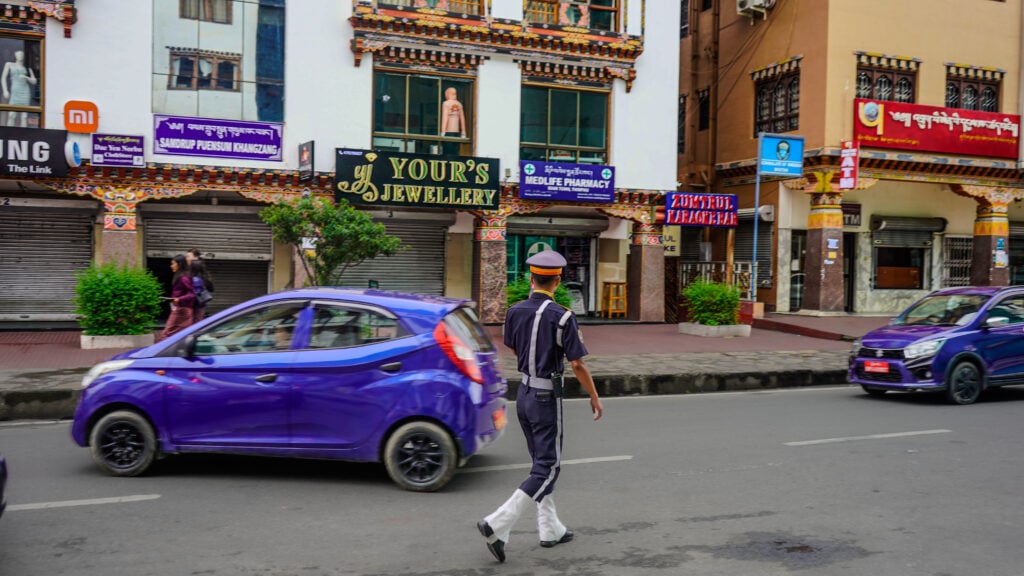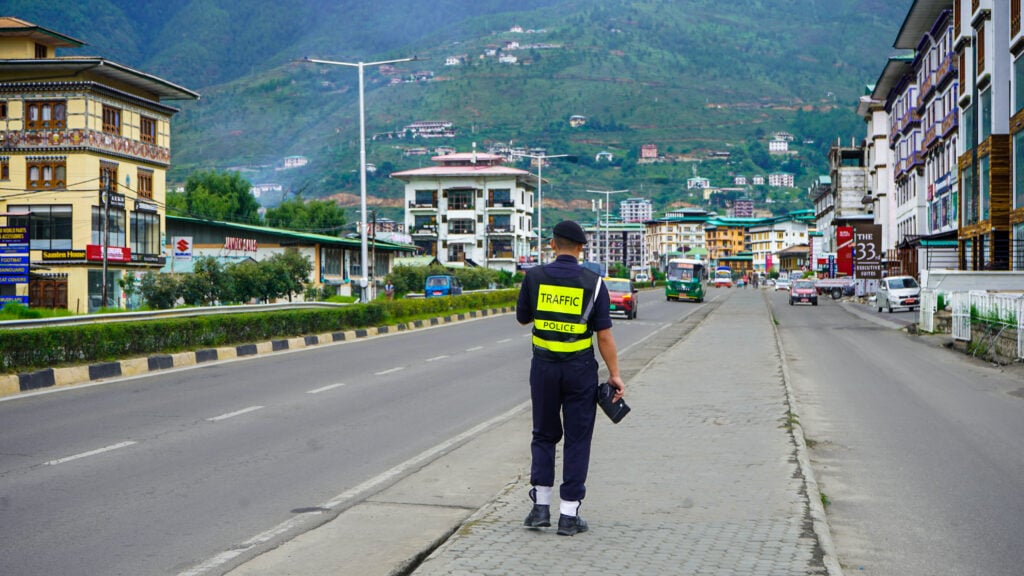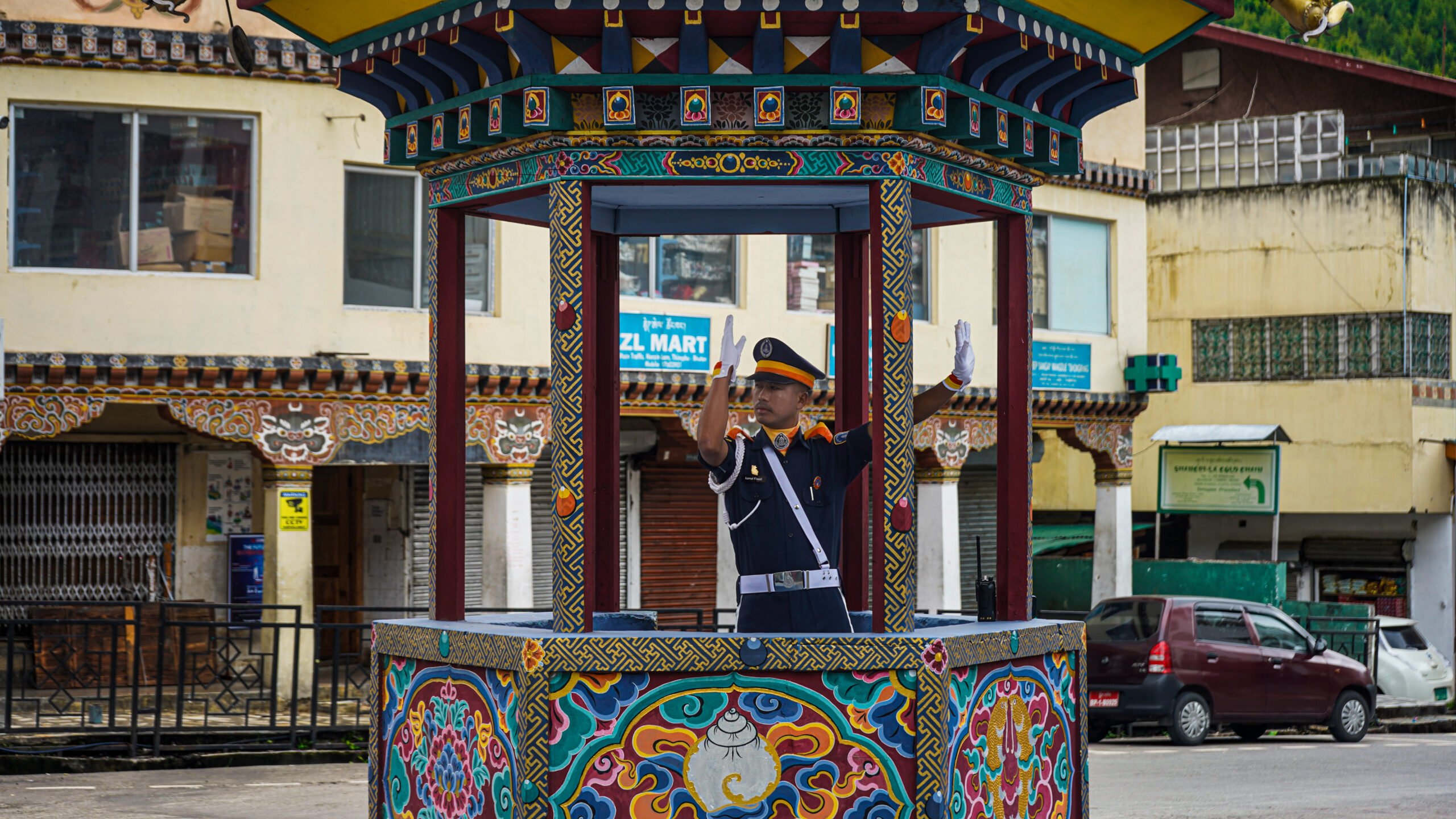Have you ever wondered about the human equivalent of a traffic light? In Thimphu, Bhutan’s capital and the country’s most populated city, there are no traffic lights. Instead, young police personnel direct the flow of vehicles.

My fascination with Thimphu’s traffic square began sometime last year, after I joined Little Bhutan as a blogger. Walking past the square, I saw tourists stop to take pictures or simply admire the workings of what looked like a scene from another time.
More recently, on my way to work, I noticed water bottles inside the gazebo, next to the officer. It had been a hot day. Curious about what it takes to control the movement of cars with such precision, I spoke with some officials from the division, as well as the personnel on the ground who manage the task every day.
Traffic Lights in Bhutan Today
In this tiny Himalayan kingdom, directing traffic requires one to be agile, flexible, and tall. After selection, recruits undergo a week-long training focused on hand signals and salutation techniques. Once trained, they take turns in shifts, usually changing every 30 minutes.

Previously, the division we now call the traffic division played a much smaller role. In 1999, the same year television and the internet were introduced in Bhutan, the division expanded. And although traffic lights were considered at one point, the idea didn’t last more than a day. To this day, in a city of about 100,000 people, vehicles are still directed manually by police personelle.
Currently, about forty officers are trained to manage vehicle movement in Thimphu’s central square.
An official noted that the gazebo’s design is “traditional,” which helps reflect and preserve our cultural identity.
Book your trip to Bhutan today! Contact us at [email protected] or call +975 1711-2338 any time, anywhere!


